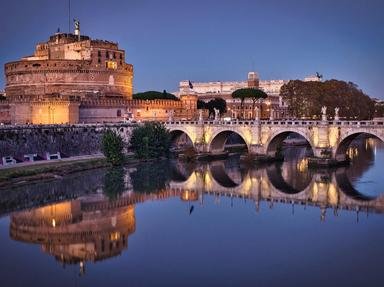Quiz Answer Key and Fun Facts
1. Ciudad Perdida in Colombia was "discovered" by the outside world in 1972. The city was founded about 800 AD and abandoned at the time of the Spanish conquest. Ciudad Perdida consists of a series of terraces carved into the mountainside and several plazas all connected by tiled roads. What does "Ciudad Perdida" translate to in English?
2. Cahokia has been called "America's Lost City" and "America's First City". With a peak population of about 15,000, Cahokia grew up in southern Illinois on the east bank of the Mississippi between about 600 and 1400 AD. It was the largest pre-Columbian city north of Mexico. The people of Cahokia built earthen pyramids, designed solar observatories and practiced human sacrifice. Cahokia is directly across the Mississippi from what major city?
3. Skara Brae in the Orkney Islands off Scotland has been compared to Pompeii due to its high degree of preservation. It's one of the best preserved Neolithic sites in Europe. Habitation of Skara Brae ended in about 2500 BCE for unknown reasons and it wasn't discovered in modern times until 1850 AD. What kept Skara Brae so well preserved during all the intervening years?
4. The legendary city of King Menes who united Lower and Upper Egypt was founded about 3100 BCE and served as Egypt's capital during the Old Kingdom. The city was captured over the years by Nubia, Assyria, Persia, and Alexander the Great and was abandoned after the Muslim conquest of Egypt in 640 AD. Although no avenue named Beale Street has been found in the ruins, the name of this ancient city is familiar to music fans. What was it called?
5. Undersea explorations frequently turn up rock formations appearing to be remains of "Atlantis-like" civilizations. Which of these countries is NOT the site of an undersea "civilization" which has yet to be verified as a genuine archaeological site?
6. This ruined city gave its name to the modern African nation where it stands. It was a major trade center of the late Iron Age Bantu/Shona civilization, populated between 1100 and 1450 AD. In legend it is said to have been the home of the Queen of Sheba. What is the name of this city of 18,000 located in the former British colony of Southern Rhodesia?
7. Some of the best hidden lost cities are those that are underwater. Frequently submerged due to earthquakes, tsunamis or climate changes, cities lost underwater can be among the most difficult for archaeologists to locate. Which of these sites was NOT located underwater?
8. Peru's Machu Picchu Is the best known site of the Incan Empire. It suffered none of the damage meted out to other Inca cities during the Spanish Conquest of the 16th century. One thing about Machu Picchu and other Inca cities is a puzzle to scientists. What is missing from Inca ruins that is present in the cities and towns of virtually every other civilization?
9. Catalhoyuk in south central Turkey is one of the oldest city ruins discovered, dating to about 7500 BCE. An estimated five to seven thousand people lived in mud brick and clay houses with adjoining walls built in honeycomb fashion. In 1961 British archaeologist James Mellaart began excavation but in 1965 the Turkish government expelled him from the country alleging that he had been involved in what sort of improper activity?
10. Mohenjo-daro was one of the largest cities of the Bronze Age Indus Valley Civilization. Founded about 2600 BCE, Mohenjo-daro existed until the Indus civilization disappeared in about 1700 BCE. The ruins are located north of Karachi in the present nation of ________.
Source: Author
wilbill
This quiz was reviewed by FunTrivia editor
gtho4 before going online.
Any errors found in FunTrivia content are routinely corrected through our feedback system.

